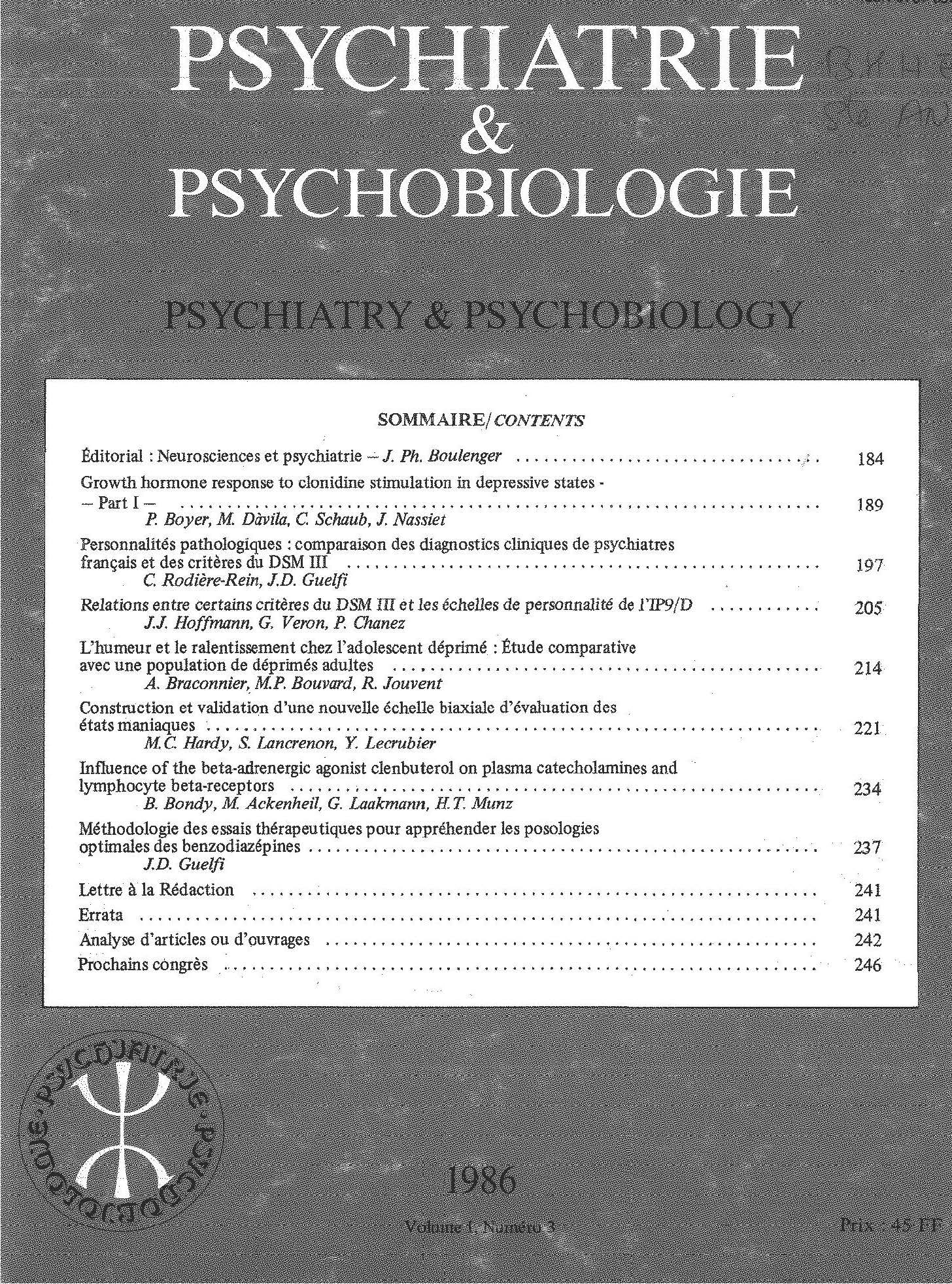Article contents
Present trends in psychiatric research in Iceland
Published online by Cambridge University Press: 28 April 2020
Summary
The small population of an island with very low rates of emigration and immigration creates a fairly unique situation for epidemiological research. This has set the trend for research in psychiatry as well as in other branches of medicine. A few ongoing studies are reviewed briefly.
A longitudinal study of a birth cohort of 5,395 probands has made it possible to estimate disease expectancy, incidence, and prevalence at different age levels. The probands still alive have reached the average age of 87 years. One half of the probands has been assigned a psychiatric diagnosis during their lifetime. The prevalence of mental disorders increases from 24% at the average age of 61 years to 40% at the average age of 87 years. The increase is caused mainly by a steeply rising prevalence of organic brain syndromes with advancing age and to a lesser extent by a rise in the prevalence of affective syndromes until the age of 75 years. The incidence of new depressive episodes increases markedly after the age of 60 years in contrast to the incidence of new manic episodes, which remains at the same level as it does until that age. An attempt is made to separate different depressive syndromes among the aged. The mortality of probands with mental disorders, especially those with organic brain syndromes and alcoholism, is increased in comparison with those without such disorders.
A random sample of the population aged 20-49 years in 1974 has been surveyed three times during a period of 10 years in order to study changes in alcohol consumption and alcohol abuse as well as in the prevalence of mental illness. A study of the consumption of general health services by psychiatric patients and reports on the attendances at psychiatric walk-in clinics and their affects on the general practitioners image of psychiatric services are mentioned.
In recent years there has been a great expansion in the treatment facilities for alcoholism. This has resulted in a very marked increase in the admission rates to in-patient treatment for alcohol abuse in spite of no increase in the average per capita alcohol consumption in Iceland, which is the lowest in Europe.
Finally an ongoing study of prescription for psychotropic drugs is referred to briefly.
Résumé
Le faible peuplement de l’Islande, et son taux d’émigration et d’immigration extrêmement faible crée une situation tout à fait particulière pour la recherche épidémiologique, déterminant ainsi l’orientation de la recherche en psychiatrie comme dans les autres branches de la médecine. Quelques-unes des études en cours sont brièvement passées en revue.
Une étude longitudinale d’une population de 5.395 probants pris en compte dès la naissance a permis de chiffrer la morbidité, l’incidence et la prévalence de la maladie en fonction des différentes tranches d'âge. Les probants qui sont encore en vie ont atteint l’âge moyen de 87 ans ; la moitié des probants a été assignée à un diagnostic psychiatrique de son vivant. La prévalence des troubles mentaux augmente de 24 % pour une moyenne d'âge de 61 ans, à 40 % pour une moyenne d’âge de 87 ans (tableau 3).
L’augmentation est principalement dûe à une très forte augmentation de la fréquence des syndromes cérébraux organiques à mesure que l’âge augmente (fig. 1), et à un moindre degré à l’accroissement de la prévalence des syndromes affectifs jusqu’à l'âge de 75 ans (tableau 3). L’incidence de nouveaux épisodes dépressifs augmente considérablement après l’âge de 60 ans, contrairement à l’incidence des nouveaux épisodes maniaques qui restent au niveau atteint antérieurement à cet âge (tableau 4). Un essai de distinction des différents syndromes dépressifs chez les sujets âgés est entrepris (tableaux 4 à 6). La mortalité des probants atteints de troubles mentaux (en particulier ceux atteints de syndromes organiques cérébraux et d’alcoolisme), est augmentée en comparaison de celle des sujets non atteints par ces troubles (fig.2).
Un échantillon pris au hasard de la population âgée de 20-49 ans en 1974 a été étudié à trois reprises pendant une période de dix ans, afin d’étudier les modifications de la consommation d’alcool et de son usage immodéré, ainsi que la prévalence de la maladie mentale. Il est fait état d'une étude de l’utilisation par les patients psychiatriques de structures de soins géréraux et des données concernant la fréquentation des centres de crise, ainsi que le retentissement que cela suscite chez les généralistes pour ce qui est de leur opinion sur les services de psychiatrie.
Ces dernières années, les divers modes de traitement de l'alcoolisme ont été considérablement développés. Cela a entraîné une augmentation du nombre d’admissions des patients alcooliques (fig. 3) à l’hôpital, ce nombre ne correspond donc pas à une augmentation de la consommation d'alcool moyenne par habitant, qui est d'ailleurs la plus faible d’Europe.
Il est enfin fait état d’une étude actuellement en cours concernant la prescription des médicaments psychotropes.
Keywords
- Type
- Research Article
- Information
- Copyright
- Copyright © European Psychiatric Association
References
References/Bibliographie
- 2
- Cited by



Comments
No Comments have been published for this article.